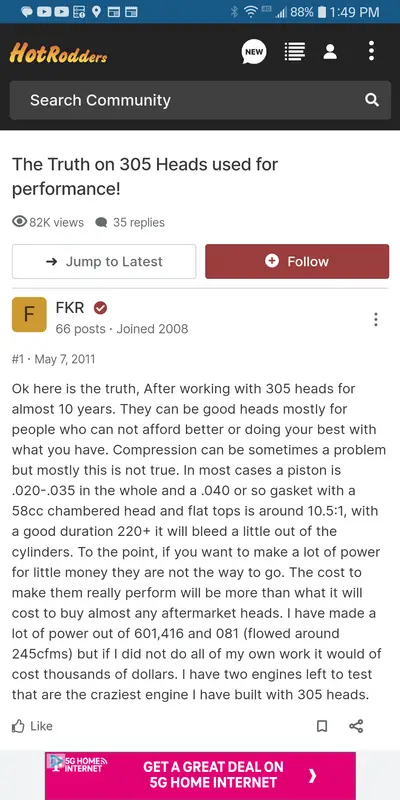78Delta88, me back again. The block number on my engine is 14010203, which makes it a 305 CID according to my casting numbers reference book. It was foundered/manufactured for use between 1980 and 1985, and the application was for Pass, Malibu, MonteCarlo, Camaro, Truck. Since I pulled it from an 1985 C-10 Chev p/u, it was correct for that vehicle to begin with and, as llsted, subsequently correct for my Monte.
The reference text also notes that there were two other castings, both 305, c/n 14010201, and 14010202, Both were manufactured for use in the 80-85 Pass, Malibu, MonteCarlo, Camaro, and Truck series of vehicles. Not sure why three separately numbered variations of the same CID. I did score the third version, 0203, possibly this was the block that was destined for the "HO" designation. My reference text does not go into that great a depth of detail. From all sources and comments, that "HO" was more of a publicity gimmick than something tangible and real.
As for the notion of adding/using Vortec heads, now I will have to unbury that long block 305 and see what the head numbers are on it. The rocker covers are centre bolt which is supposedly one sign of what might be underneath. Once I snatched that motor out of the engine bay, it just went on the dolly in all its filthy, grimy glory and there it has sat I had no idea as to what it's pedigree was, only that it was not politically correct for what I had in mind for this build.
Mind you, 85 Monte's didn't come with factory four speeds either, so at least some of that PC quest has gone by the board but, hey it sure knocks some of the snot out of the looky-lou's.
It is beginning to sound like, unless the bosses in the cam valley for the retainer frog miraculously got casted into pre 86-87 305 blocks, then finding a roller cam with an acceptable RV grind machined into it is about to be added to the unobtanium list.
Bother
Nick
The reference text also notes that there were two other castings, both 305, c/n 14010201, and 14010202, Both were manufactured for use in the 80-85 Pass, Malibu, MonteCarlo, Camaro, and Truck series of vehicles. Not sure why three separately numbered variations of the same CID. I did score the third version, 0203, possibly this was the block that was destined for the "HO" designation. My reference text does not go into that great a depth of detail. From all sources and comments, that "HO" was more of a publicity gimmick than something tangible and real.
As for the notion of adding/using Vortec heads, now I will have to unbury that long block 305 and see what the head numbers are on it. The rocker covers are centre bolt which is supposedly one sign of what might be underneath. Once I snatched that motor out of the engine bay, it just went on the dolly in all its filthy, grimy glory and there it has sat I had no idea as to what it's pedigree was, only that it was not politically correct for what I had in mind for this build.
Mind you, 85 Monte's didn't come with factory four speeds either, so at least some of that PC quest has gone by the board but, hey it sure knocks some of the snot out of the looky-lou's.
It is beginning to sound like, unless the bosses in the cam valley for the retainer frog miraculously got casted into pre 86-87 305 blocks, then finding a roller cam with an acceptable RV grind machined into it is about to be added to the unobtanium list.
Bother
Nick
Last edited:



